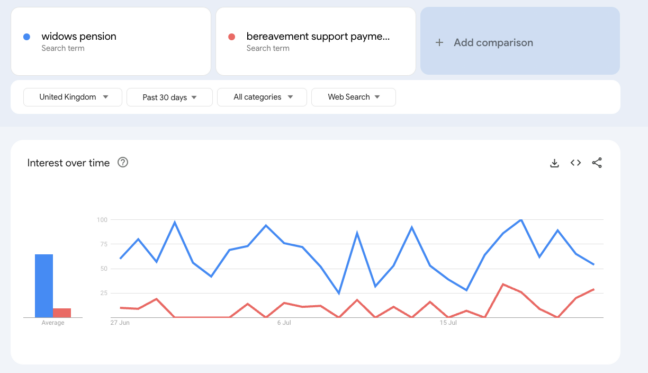
Find out when it pays to use the same language as your target audiences – and when to approach their lingo with caution.
We live in a noisy world. It can be hard to capture your audience’s attention when there are so many competing forces.
One way to approach this problem is to use your audience’s words and expressions. Jargon, internal company language, sector-specific terms and unfamiliar acronyms simply aren’t going to resonate with many people.
But if you can connect with your audiences in a language they understand, you have a much better chance of getting some of their precious time and attention.
There are many more benefits to using your audience’s terms and phrases, too.
Capture and persuade your audience
In the words of marketing guru David Ogilvy: “If you’re trying to persuade people to do something, or buy something, it seems to me you should use their language, the language they use every day, the language in which they think. We try to write in the vernacular.”
This seems even more significant in today’s world. Some companies are turning to AI tools such as ChatGPT and Bard to write content. Bots can do a decent job of churning out generic content.
But who wants more generic content on the internet? Marketers and copywriters have an opportunity to craft standout content that is unique, genuine, effective and current.
Even better, we can create content that’s weird. In Keep brands weird: The research framework for exceptional data-driven content, editor and strategist Vicky Gu makes the case for gathering unique data to generate content strategy:
“With algorithms homogenizing our feeds, it takes extra effort to look outside the usual places for inspiration… creating content with an edge requires diversifying your inputs. Your brand won’t stand out unless you search deeper and farther than everyone else.”
This approach can be applied to crafting content as well as content strategy. Search farther and deeper to find out what your audiences are saying. Then use their words to make your message resonate in a way that’s as weird, interesting and unique as your brand is.
Save lives
Depending on what industry you work in, using your audience’s language can potentially be life-saving. Or, at least, life-changing.
In 2003, researchers found that the instructions for installing children’s car seats were written in language that was too difficult for many adults to understand. This meant that around 80 per cent of car safety seats were not installed or used properly. Children’s lives were at risk.
The study made recommendations to shorten sentences and swap formal terms for words that drivers actually use. For example, ‘collision’ should be ‘crash’. ‘Automobile’ should be ‘car’. And ‘remedied’ should be ‘fixed’.
The NHS has also spent time considering the effect of everyday language on patients: “We try to use the words people use when they talk about their health and when they search the internet.”
This means, for example, using the words ‘kidney’ instead of ‘renal’, ‘pee’ instead of urine and ‘poo’ instead of stool. Choosing widely-used terms helps to ensure everyone has the best chance of receiving the help they need.
“We know some people think we shouldn’t use words like ‘pee’ and ‘poo’, but we haven’t seen anyone have problems knowing what we mean,” says the NHS digital blog. “Most importantly, if someone with poor literacy understands ‘blood in your poo’, it might just save their life.”
Be understood
If you need people to follow instructions, it helps if they understand them. From registration forms to payment processes, clear instructions are vital.
The National Trust does a great job of using human language on the ticket machines in its car parks. The instructions state: “Press green button to wake machine”.
They could have said “activate” or “operate” machine, but “wake” is a much friendlier and more familiar word that you’re likely to use.
Media organisations must also consider the language and terms they use when reporting on current events. There is a constant juggle between using the relevant terminology and ensuring people understand the crux of the story.
For example, many people understood and used the term Brexit, which became a common shorthand for the process of Britain exiting the EU. However, the meaning of the phrase Northern Ireland Protocol had to be explained at the start of almost every story that covered it.
One of the easiest ways to see if people understand the terms used by the media is to look at Google Trends data.
For example, when the media was reporting on the implosion – or collapse inwards – of the Titan submersible in summer 2023, Google reported a spike in searches for the term “implosion meaning”. It’s fair to assume that “implosion” was not understood by many of the media’s audiences.
Be found
Your content should include the search terms your audiences are using. If not, it’s much harder for people to find what they want and need. Sometimes this might involve weaving in words or phrases that are simply inaccurate, but it’s worth the pay-off of being found and read.
For example, there used to be a Widow’s Pension scheme in the UK. This has now been replaced by the Bereavement Support Payment. The UK Government’s page about the Bereavement Support Payment gives important information about the current support available. However, it also includes the outdated search term that people are familiar with to pick up organic search traffic. This is because people are still searching for Widow’s Pension much more frequently than Bereavement Support Payment:

Jump on trends – but don’t get it wrong
New words and expressions crop up all the time. Some become commonplace while others are simply a passing trend.
Every year Oxford Languages tries to identify significant new words by choosing a word of the year. This is a term that they say has “attracted a great deal of interest over the last 12 months.” ‘Goblin mode’ was the winner in 2022, and ‘Vax’ won the title in 2021.
But if you want to react fast, how do you know when to jump on a new trending word or phrase? It was hard to imagine, for example, that ‘Platty Joobs’ would become so widespread as a cheeky, cheery term for the Platinum Jubilee. However, Chazzle Dazzle and Coribobs did not catch on in the same way when it came to slang for the coronation of King Charles III.
If:
- your brand has a clearly defined personality
- you can see that your audiences are using a new term
- you’ve weighed up the risks and benefits of using it yourself
- and that term fits with your tone of voice and brand guidelines…
… then it makes sense to jump on the bandwagon. Go wild with your marketing, join the chat on social media and embrace the new.
If, however, there’s any doubt, then stay clear. The results can be tone deaf and cringe-worthy. Don’t use your audience’s language for the sake of it. Do it as part of a well-informed, carefully executed strategy.
The benefits of adopting user language: key takeaway
There are so many benefits to using the same language that your audiences use. These include capturing attention, being understood, persuading people to act and being found through search engines. Depending on your content, user language could also save lives – or simply entertain.
Consider the benefits and start to think about what sources of user language your business already holds. These could include site search data, customer emails, chatbot messages and social media.
If or when you start talking the talk, just make sure you do it in a way that’s true to your brand.
- Contact us to find out how to embed user language in your marketing.
Speech bubbles image by Melissa Dinwiddie.